From Wikipedia, the free encyclopedia
Yamada Tarō (山田太郎), a Japanese placeholder name (male), equivalent to John Smith in English. Jane Smith equivalent would be Yamada Hanako (山田花子).
Japanese names (日本人の氏名 nihonjin no shimei?) in modern times usually consist of a family name (surname), followed by a given name. “Middle names” are not generally used. Japanese names are usually written in kanji, which are characters of usually Chinese origin in Japanese pronunciation. The kanji for a name may have a variety of possible Japanese pronunciations, but parents might use hiragana or katakana when giving a birth name to their newborn child. Names written in hiragana or katakana are phonetic renderings, and so lack the visual meaning of names expressed in the logographic kanji.
Japanese family names are extremely varied: according to estimates, there are over 100,000 different surnames in use today in Japan. Common family names in Japan include Satō (佐藤) (most common), Suzuki (鈴木) (second most common), and Takahashi (高橋) (third most common). This diversity is in stark contrast to the situation in other nations of the Chinese cultural sphere, there being very few Chinese surnames (a few hundred common, 20 comprise half the population), and similarly Korean names (250 names, of which 3 comprise almost half the population) and Vietnamese names (about 100 family names, of which 3 comprise 60% of the population). This reflects different history: while Chinese surnames have been in use for millennia and were often reflective of an entire clan or adopted from nobles (with or without any genetic relationship) – and were thence transferred to Korea and Vietnam via noble names, modern Japanese family names date only to the 19th century, following the Meiji restoration, and were chosen at will. The recent introduction of surnames has two additional effects: Japanese names became widespread when the country had a very large population (over 30,000,000 during the early Meiji era – see Demographics of Imperial Japan) instead of dating to ancient times (population estimated at 300,000 in 1 CE, for instance – see Demographics of Japan before Meiji Restoration), and since little time has passed, Japanese names have not experienced as significant surname extinction as has occurred in the much longer history in China.
Surnames occur with varying frequency in different regions; for example, the names Chinen (知念), Higa (比嘉), and Shimabukuro (島袋) are common in Okinawa but not in other parts of Japan; this is mainly due to differences between the language and culture of Yamato people and Okinawans. Many Japanese family names derive from features of the rural landscape; for example, Ishikawa (石川) means “stone river”, Yamamoto (山本) means “the base of the mountain”, and Inoue (井上) means “above the well”.
While family names follow relatively consistent rules, given names are much more diverse in pronunciation and character usage. While many common names can easily be spelled or pronounced, many parents choose names with unusual characters or pronunciations, and such names cannot in general be spelled or pronounced unless both the spelling and pronunciation are given. Unusual pronunciations have especially become common, with this trend having increased significantly since the 1990s. For example, the popular boy’s name 大翔 is traditionally pronounced “Hiroto”, but in recent years alternative pronunciations “Haruto”, “Yamato“, “Taiga”, “Sora”, “Taito”, “Daito”, and “Masato” have all entered use.
Male names often end in -rō (郎 “son”, but also 朗 “clear, bright”; e.g. “Ichirō“) or -ta (太 “great, thick”; e.g. “Kenta“), or contain ichi (一 “first [son]”; e.g. “Ken’ichi“), kazu (also written with 一 “first [son]”, along with several other possible characters; e.g. “Kazuhiro“), ji (二 “second [son]” or 次 “next”; e.g. “Jirō“), or dai (大 “great, large”; e.g. “Daiichi“) while female names often end in -ko (子 “child”; e.g. “Keiko“) or -mi (美 “beauty”; e.g. “Yumi“). Other popular endings for female names include -ka (香 “scent, perfume” or 花 “flower”; e.g. “Reika“) and -na (奈, or 菜, meaning greens; e.g. “Haruna“).
Structure
The majority of Japanese people have one surname and one given name with no middle name, except for the Japanese imperial family, whose members bear no surname. The family name – myōji (苗字 or 名字), uji (氏) or sei (姓) – precedes the given name, called the “name” – (名前 namae) or “lower name” (下の名前 shita no namae). The given name may be referred to as the “lower name” because, in vertically written Japanese, the given name appears under the family name. People with mixed Japanese and foreign parentage may have middle names.
Historically, myōji, uji and sei had different meanings. Sei was originally the matrilineal surname. Later it became granted only by the emperor. There were relatively few sei, and most of the medieval noble clans trace their lineage either directly to these sei or to the courtiers of these sei. Uji was first used to designate patrilineal descent, but later merged with myōji around the same time sei lost its matrilineal significance. Myōji was, simply, what a family chooses to call itself, as opposed to the sei granted by the emperor. While it was passed on patrilineally, one had a certain degree of freedom in changing one’s myōji. See also Kabane.
Multiple Japanese characters have the same pronunciations, so several Japanese names have multiple meanings. A particular kanji itself can have multiple meanings and pronunciations. In some names, Japanese characters phonetically “spell” a name and have no intended meaning behind them. Many Japanese personal names use puns.
Some few names can serve either as surnames or as given names (for example Mayumi 真弓, Kaneko 金子, Masuko 益子, or Arata 新). In addition, to those familiar with Japanese names, which name is the surname and which is the given name is usually apparent, no matter which order the names are presented in. This thus makes it unlikely that the two names will be confused, for example when writing in (say) English using the order family name, given name. However, due to the variety of pronunciations and differences in languages, some common surnames and given names may coincide when Romanized: e.g., Shoji (昌司, 昭次, or 正二?) (given name) and Shoji (庄司, 庄子, 東海林, or 小路?) (surname).
Japanese names have distinct differences from Chinese names through the selection of characters in a name and pronunciation. A Japanese person can distinguish a Japanese name from a Chinese name by looking at it. Akie Tomozawa, author of “Japan’s Hidden Bilinguals: The Languages of ‘War Orphans’ and Their Families After Repatriation From China,” said that this was equivalent to how “Europeans can easily tell that the name ‘Smith’ is English and ‘Schmidt’ is German or ‘Victor’ is English or French and ‘Vittorio’ is Italian”.
Characters
Japanese names are usually written in kanji (Chinese characters), although some names use hiragana or even katakana, or a mixture of kanji and kana. While most “traditional” names use kun’yomi (native Japanese) kanji readings, a large number of given names and surnames use on’yomi (Chinese-based) kanji readings as well. Many others use readings which are only used in names (nanori), such as the female name Nozomi (希). The majority of surnames comprise one, two or three kanji characters. There are also a small number of four or five kanji surnames, such as Teshigawara (勅使河原) and Kutaragi (久多良木), Kadenokōji (勘解由小路), but these are extremely rare.[citation needed] The sound no, meaning “of”, and corresponding to the character の, is often included in names but not written as a separate character, as in the common name 井上 (i-no-ue, well-of-top/above, top of the well), or historical figures such as Sen no Rikyū.
Most personal names use one, two, or three kanji. Male given names often use the characters “hiro” (宏, “expansive, wide”), “ki” (木, “tree, standing”), and “ta” (太, “big, fat”). Four syllable given names are common, especially in eldest sons.
As mentioned above, female given names often end in the syllable ko, written with the kanji meaning “child” (子), or mi, written with the kanji meaning “beautiful” (美).
The usage of -ko (子) has changed significantly over the years: prior to the Meiji Restoration (1868), it was reserved for members of the imperial family. Following the restoration, it became popular and was overwhelmingly common in the Taishō and early Shōwa era. The suffix -ko increased in popularity after the mid-20th century. Around the year 2006, due to the citizenry mimicking naming habits of popular entertainers, the suffix -ko was declining in popularity. At the same time, names of western origin, written in kana, were becoming increasingly popular for naming of girls.By 2004 there was a trend of using hiragana instead of kanji in naming girls. Molly Hakes, author of The Everything Conversational Japanese Book: Basic Instruction For Speaking This Fascinating Language In Any Setting, said that this may have to do with using hiragana out of cultural pride, since hiragana is Japan’s indigenous writing form, or out of not assigning a meaning to a girl’s name so that others do not have a particular expectation of her.
Names ending with -ko dropped significantly in popularity in the mid 1980s, but are still given, though much less than in the past. Male names occasionally end with the syllable ko, but very rarely using the kanji 子 (most often, if a male name ends in ko, it ends in hiko, using the kanji 彦 meaning “boy”). Common male name endings are –shi and –o; names ending with –shi are often adjectives, e.g., Atsushi which might mean, for example, “(to be) faithful.” In the past (before World War II), names written with katakana were common for women, but this trend seems to have lost favour. Hiragana names for women are not unusual. Kana names for boys, particularly those written in hiragana, have historically been very rare. This may be in part because the hiragana script is seen as feminine; in medieval Japan, women generally were not taught kanji and wrote exclusively in hiragana.
Names cannot begin with the syllable n (ん, ン); this is in common with other proper Japanese words, though colloquial words may begin with ん, as in んまい (nmai, variant of うまい umai, delicious). Some names end in n: the male names Ken, Shin, and Jun are examples. The syllable n should not be confused with the consonant “n,” which names can begin with; for example, the female name Naoko (尚子) or the male Naoya (直哉). (The consonant “n” needs to be paired with a vowel to form a syllable.)
One large category of family names can be categorized as “-tō” names. The kanji 藤, meaning wisteria, has the on’yomi tō (or, with rendaku, dō). Many Japanese people have surnames that include this kanji as the second character. This is because the Fujiwara clan (藤原家) gave their samurai surnames (myōji) ending with the first character of their name, to denote their status in an era when commoners were not allowed surnames. Examples include Atō, Andō, Itō (although a different final kanji is also common), Udō, Etō, Endō, Gotō, Jitō, Katō, Kitō, Kudō, Kondō, Saitō, Satō, Shindō, Sudō, Naitō, Bitō, and Mutō. As already noted, some of the most common family names are in this list.
Japanese family names usually include characters referring to places and geographic features.
Difficulty of reading names
This section does not cite any references or sources. Please help improve this section by adding citations to reliable sources. Unsourced material may be challenged and removed. (July 2009)
A name written in kanji may have more than one common pronunciation, only one of which is correct for a given individual. For example, the surname written in kanji as 東海林 may be read either Tōkairin or Shōji. Conversely, any one name may have several possible written forms, and again, only one will be correct for a given individual. The character “一” when used as a male given name may be used as the written form for “Hajime,” “Hitoshi,” “Ichi- / -ichi” “Kazu- / -kazu,” and many others. The name “Hajime” may be written with any of the following: 始, 治, 初, 一, 元, 肇, 創, 甫, 基, 哉, 啓, 本, 源, 東, 大, 孟, or 祝. This many-to-many correspondence between names and the ways they are written is much more common with male given names than with surnames or female given names, but can be observed in all these categories. This can make the collation, pronunciation, and romanization of a Japanese name a very difficult problem. For this reason, business cards often include the pronunciation of the name as furigana, and forms and documents often include spaces to write the reading of the name in kana (usually katakana).
A few Japanese names, particularly family names, include archaic versions of characters. For example the very common character shima, island, may be written as 嶋 or 嶌 instead of the usual 島. Some names also feature very uncommon kanji, or even kanji which no longer exist in modern Japanese. Japanese people who have such names are likely to compromise by substituting similar or simplified characters.
An example of such a name is Saitō. There are two common kanji for sai here. The two sai characters have different meanings: 斉 means “together” or “parallel”, but 斎 means “to purify”. These names can also exist written in archaic forms, as 齊藤 and 齋藤 respectively.
Family names are sometimes written with idiosyncratic characters, called ateji, that relate indirectly to the name as spoken. For example, 四月一日 would normally be read as shigatsu tsuitachi (“April 1st”), but as a family name it is read watanuki (“unpadded clothes”), because April 1 is the traditional date to switch from winter to summer clothes. In the same way 小鳥遊 would normally be read as kotori asobi (“little birds play”) or shōchōyū, but is read Takanashi, because little birds (kotori) play (asobi) where there are no (nashi) hawks (taka).
Most Japanese people and agencies have adopted customs to deal with these issues. Address books, for instance, often contain furigana or ruby characters to clarify the pronunciation of the name. Japanese nationals are also required to give a romanized name for their passport. The recent use of Japanese media using katakana when referring to Japanese celebrities who have gained international fame has started a fad among young socialites who attempt to invoke a cosmopolitan flair using katakana names as a badge of honor.[citation needed] All of these complications are also found in Japanese place names.
Not all names are complicated. Some common names are summarized by the phrase tanakamura (“the village in the middle of the rice fields”): the three kanji: 田 (ta, rice field), 中 (naka, middle) and 村 (mura, village), together in any pair, form a simple, reasonably common surname: Tanaka, Nakamura, Murata, Nakata (Nakada), Muranaka, Tamura.
Despite these difficulties, there are enough patterns and recurring names that most native Japanese will be able to read virtually all family names they encounter and the majority of personal names.
Historical names
The current structure (family name + given name) did not materialize until the 1870s when the government made the new family registration system.
In feudal Japan, names reflected a person’s social status. They also reflect a person’s affiliation to Buddhist, Shintō, feudatory-military, Confucian-scholarly, mercantile, peasant, slave and imperial orders.
Before feudal times, Japanese clan names figured prominently in history: names with no fall into this category. No means of and is similar in usage to the aristocratic von in German although the association is in the opposite order in Japanese, and is not generally explicitly written in this style of name. Thus, Minamoto no Yoritomo (源 頼朝) was Yoritomo (頼朝) of the Minamoto (源) clan. Fujiwara no Kamatari (藤原 鎌足), Ki no Tsurayuki (紀 貫之), and Taira no Kiyomori (平 清盛) are additional examples. These family names were recorded in Shinsen Shōjiroku. Ryukyuan ruling class used names composed of kanji, usually of one or two syllables and read in their dialects, like Korean and Chinese names.
Historically, a Japanese person could maintain several names to use in different occasions. Among those that were common are azana, imina or okurina (either translate to posthumous name) and gō (号) (a pen name, Haigō or Haimei for a haiku poet, Kagō for Waka poet). It was not uncommon for one to have more than 10 names. In the 19th century, Japanese people used multiple names. When nobles and samurai received promotions in rank, they received new names. Saigō Takamori had one name at birth and received another name in adulthood. In addition he wrote poetry under a different name.
Imina (諱?) means the personal name of someone who is no longer living. After the death of someone given a posthumous name (諡 okurina?), the real name would from that point be called the person’s imina and would not be used anymore. Instead, the person would be referred to by his or her okurina. Imina are also used for Japanese emperors. Prior to Emperor Jomei, the imina of the emperors were very long and not used. The number of characters in each name diminished after Jomei’s reign.
Azana (字), which is given at Genpuku (元服), is used by others and one himself uses his real name to refer to him. Gō are commonly named after places or houses; e.g., Basho, as in the Haiku poet Matsuo Bashō (松尾 芭蕉), is named after his house, Bashō-an (芭蕉庵).
In the late shogunate period, many anti-government activists used several false names to hide their activities from the shogunate. Examples are Saidani Umetarō (才谷 梅太郎) for Sakamoto Ryōma (坂本 龍馬), Niibori Matsusuke (新堀 松輔) for Kido Takayoshi (木戸 孝允) and Tani Umenosuke (谷 梅之助) for Takasugi Shinsaku (高杉 晋作). The famous writer Kyokutei Bakin (曲亭 馬琴) is known to have had as many as 33 names.
Professional names
Actors and actresses in Western and Japanese dramatic forms, comedians, sumo wrestlers, Western-style professional wrestlers, and practitioners of traditional crafts often use professional names. Many stage names of television and film actors and actresses are unremarkable, being just like ordinary Japanese personal names, but a few are tongue-in-cheek. For example, Kamatari Fujiwara (藤原 釜足) chose the name of the aforementioned founder of the Fujiwara family, while Hino Yōjin (日野 陽仁)’s name sounds like be careful with fire (although written differently). Many stand-up comics like the duo Beat Takeshi and Beat Kiyoshi choose a Western name for the act, and use their own (or stage) given names. Writers also tend to be clever about their names, for example Edogawa Rampo which is designed to sound like “Edgar Allan Poe“.
Sumo wrestlers take wrestling names called shikona (醜名 or 四股名). While a shikona can be the wrestler’s own surname, most upper-division rikishi have a shikona different from their surname. A typical shikona consists of two or three kanji, rarely just one or more than three. Often, part of the name comes from the wrestler’s master, a place name (such as the name of a province, a river, or a sea), the name of a weapon, an item identified with Japanese tradition (like a koto or nishiki), or a term indicating superiority. Often, waka indicates a wrestler whose father was also in sumo; in this case, the meaning is junior. Wrestlers can change their shikona, as Takahanada did when he became Takanohana (貴ノ花) and then Takanohana (貴乃花). Another notable example is the wrestler Sentoryu, which means fighting war dragon but is also homophonous with St. Louis, his city of origin.
Geisha and practitioners of traditional crafts and arts such as pottery, the tea ceremony, calligraphy, irezumi (tattooing) and ikebana (flower arranging) often take professional names. In many cases, these come from the master under whom they studied. Kabuki actors take one of the traditional surnames such as Nakamura (中村), Bandō or Onoe. Some names are inherited on succession, such as that of the famous Kabuki actor Bandō Tamasaburō V (五代目 坂東 玉三郎 Godaime Bandō Tamasaburō) through a naming ceremony.
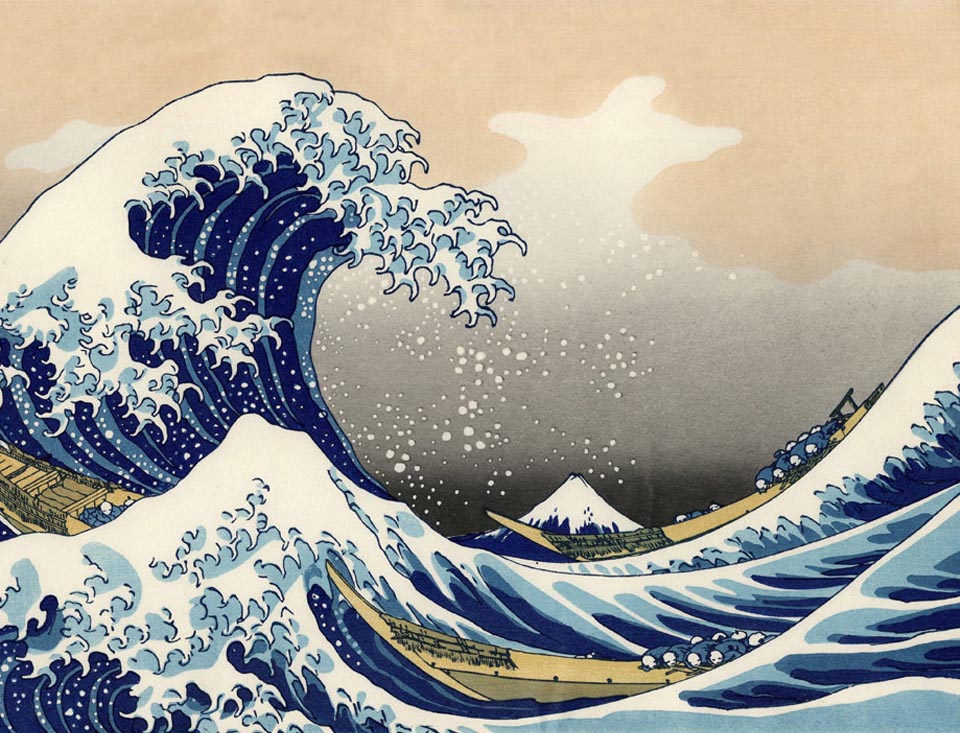


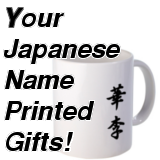
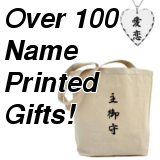
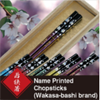
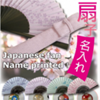






Trackback URL
Comment & Trackback
Comment feed
Comment